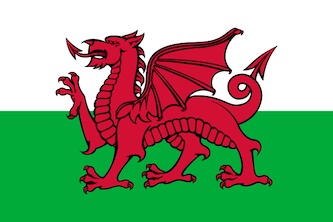Researchers from the University of California may have discovered why some people experience headaches after drinking just a small glass of red wine, even though they can tolerate other types of alcohol. They believe that a compound called quercetin, which is found in red grapes, can interfere with how the body metabolizes alcohol. Quercetin is an antioxidant or flavanol that is present in high levels in Cabernet wines from the sunny Napa Valley. The researchers suggest that more expensive red wines, which are made from high-quality grapes exposed to more sunshine, may be worse for headache-prone individuals compared to cheaper red wines made from grapes grown in shaded areas.
There have been several theories proposed to explain red-wine headaches. Some suggest that sulphites, which are preservatives used in wine, may be the cause. However, sulphite content is generally higher in sweet white wines rather than reds. Another possible culprit is histamine, which is more common in red wine. Histamine can dilate blood vessels and potentially trigger headaches. However, there is limited evidence to support these theories.
Experts have found that individuals with East Asian heritage, due to a gene affecting the alcohol-metabolizing enzyme ALDH2, may be intolerant to alcohol and experience headaches, flushing, and nausea when they drink. The researchers believe that a similar pathway is involved in red-wine headaches. They have shown in the lab that quercetin can indirectly block the action of ALDH2. However, they still need to prove this theory in human studies.
Quercetin is also found in other fruits and vegetables and is known for its anti-inflammatory properties. It does not appear to cause headaches on its own. The researchers plan to conduct experiments in which volunteers prone to red-wine headaches will be given a quercetin supplement or a placebo along with a standard drink of vodka. They hope to start these studies in the coming months.
While the researchers’ findings are promising, some experts believe that other ingredients in wine may also be worth exploring as headache triggers. These include pectinases and dimethyl dicarbonate, which are used in winemaking and can potentially produce methanol. It is important to note that excessive alcohol consumption can have serious health consequences, including liver damage, strokes, and heart disease. It is recommended to drink alcohol in moderation and be aware of one’s tolerance and potential triggers for headaches.
Original news source: Red-wine headache explained – and it is not about volume (BBC)
Listen
Slow
Normal
Fast
Group or Classroom Activities
Warm-up Activities:
– News Summary
Instructions: Students will work in pairs to summarize the key points of the article in their own words. Each pair has to create a brief news report that captures the main findings, possible causes for red-wine headaches, and the future research plans mentioned in the article. They will then present their summary to the class.
– Opinion Poll
Instructions: Conduct an opinion poll in the classroom where each student must answer whether they believe quercetin is the primary cause of red-wine headaches, based on the information from the article. After everyone has responded, discuss as a class why students have chosen their particular stance and what additional information might sway their opinions.
– Keyword Taboo
Instructions: Write down key terms from the article (e.g., quercetin, ALDH2, histamine, sulphites, antioxidants, metabolism). Students must describe these terms to their partner without using the term itself or five additional banned words that are related to it. This will encourage students to use their vocabulary and speaking skills to convey complex concepts in a way that’s understandable.
– Future Predictions
Instructions: Ask students to work in small groups to predict the outcomes of the planned studies mentioned in the article. They should discuss and write down what they think researchers will discover about quercetin and red-wine headaches. Then, each group will share their predictions and provide reasons for their thoughts, promoting the use of future tense and hypothesis language structures.
– Synonym Challenge
Instructions: Select challenging vocabulary words from the article (e.g., interfere, tolerate, metabolize, dilate, trigger). Students will work in pairs to come up with as many synonyms as they can for each word, without using their phones or dictionaries. This activity will help expand their vocabulary and improve their ability to express ideas with different words.
Comprehension Questions:
1. What have researchers from the University of California discovered about the cause of headaches after drinking red wine?
2. What is quercetin and where is it most commonly found?
3. Why might more expensive red wines potentially cause more headaches than cheaper ones?
4. What are some other theories that have been proposed to explain red-wine headaches?
5. How does the gene affecting the ALDH2 enzyme relate to the experience of headaches in individuals with East Asian heritage?
6. What experiments do the researchers plan to conduct with volunteers prone to red-wine headaches?
7. Besides quercetin, what other ingredients in wine are being considered as potential headache triggers?
8. What are the serious health consequences of excessive alcohol consumption mentioned in the article?
Go to answers ⇩
Listen and Fill in the Gaps:
Researchers from the University of California may have discovered why some people (1)______ headaches after drinking just a (2)______ glass of red wine, even though they can tolerate other types of alcohol. They believe that a compound called quercetin, which is found in red grapes, can interfere with how the body metabolizes alcohol. Quercetin is an antioxidant or flavanol that is present in high levels in Cabernet wines from the sunny Napa Valley. The researchers suggest that more (3)______ red wines, which are made from high-quality grapes (4)______ to more sunshine, may be worse for headache-prone individuals compared to cheaper red wines made from grapes grown in shaded areas.
There have been several theories proposed to explain red-wine (5)______. Some suggest that sulphites, which are preservatives used in wine, may be the cause. However, sulphite content is generally higher in sweet white wines rather than reds. Another possible culprit is histamine, which is more common in red wine. (6)______ can dilate blood vessels and potentially trigger headaches. However, there is (7)______ evidence to support these theories.
Experts have found that (8)______ with East Asian heritage, due to a gene affecting the alcohol-metabolizing enzyme ALDH2, may be intolerant to alcohol and experience headaches, flushing, and (9)______ when they drink. The researchers believe that a similar pathway is involved in red-wine headaches. They have shown in the lab that quercetin can indirectly block the (10)______ of ALDH2. However, they still need to prove this (11)______ in human studies.
Quercetin is also found in other fruits and vegetables and is known for its anti-inflammatory properties. It does not appear to cause headaches on its own. The researchers plan to (12)______ experiments in which volunteers prone to red-wine headaches will be given a quercetin supplement or a placebo along with a (13)______ drink of vodka. They hope to (14)______ these studies in the coming months.
While the researchers’ findings are promising, some experts believe that other ingredients in wine may also be worth exploring as headache triggers. These include (15)______ and (16)______ dicarbonate, which are used in winemaking and can potentially produce methanol. It is important to note that excessive alcohol consumption can have serious health consequences, including liver damage, strokes, and heart disease. It is recommended to drink alcohol in moderation and be aware of one’s tolerance and potential triggers for headaches.
Go to answers ⇩
Discussion Questions:
Students can ask a partner these questions, or discuss them as a group.
1. What is your personal experience with alcohol-related headaches, and do you notice a difference between red wine and other types of alcohol?
2. How would you feel if you discovered that your favorite type of wine was the cause of your headaches?
3. Do you like the idea of conducting experiments on humans to find the cause of red-wine headaches? Why or why not?
4. Do you think that the antioxidant properties of quercetin outweigh the negative effects it may have on some individuals?
5. Have you ever heard of the compound quercetin before reading this article, and what is your opinion on its role in red-wine headaches?
6. What is your take on the higher incidence of alcohol intolerance among individuals with East Asian heritage?
7. How do you manage or prevent headaches when you consume alcohol, particularly red wine?
8. Do you think that more expensive red wines being potentially worse for headache-prone individuals might influence your purchasing decisions?
9. What is your understanding of how histamine in red wine might contribute to headaches, and have you taken any steps to mitigate this?
10. Do you think that alternative ingredients in wine, like pectinases and dimethyl dicarbonate, should be more closely regulated due to their potential health effects?
11. How would you feel about taking a quercetin supplement before drinking alcohol if it was proven to prevent headaches?
12. Do you believe that the benefits of drinking red wine, such as the presence of antioxidants, are worth the risk of headaches for those who are prone?
13. What is your perspective on the role of genetics in alcohol tolerance and the potential for headaches?
14. Do you think that the findings from the upcoming studies on quercetin and alcohol metabolism will significantly impact the wine industry?
15. How do you approach alcohol consumption responsibly, and what advice would you give to someone who experiences alcohol-related headaches?
Individual Activities
Vocabulary Meanings:
Match each word to its meaning.
Words:
1. compound
2. quercetin
3. metabolizes
4. antioxidant
5. preservatives
6. dilate
7. gene
8. supplement
Meanings:
(a) A substance formed by the combination of two or more elements
(b) Breaks down or processes a substance in the body
(c) Substances added to food or drink to prevent spoilage
(d) A product taken in addition to one’s diet
(e) A flavanol found in red grapes and other fruits and vegetables
(f) A substance that inhibits or prevents oxidation
(g) A unit of heredity that is transferred from a parent to offspring
(h) Expands or widens blood vessels
Go to answers ⇩
Multiple Choice Questions:
1. What is the compound believed to be responsible for headaches after drinking red wine?
(a) Sulphites
(b) Quercetin
(c) Histamine
(d) ALDH2
2. Where is quercetin found in high levels?
(a) Sweet white wines
(b) Red grapes
(c) Cabernet wines
(d) Shaded areas
3. Which group of people may be intolerant to alcohol and experience headaches?
(a) Those with European heritage
(b) Those with African heritage
(c) Those with East Asian heritage
(d) Those with South American heritage
4. What is quercetin known for?
(a) Its anti-inflammatory properties
(b) Its ability to cause headaches
(c) Its ability to dilate blood vessels
(d) Its ability to metabolize alcohol
5. What other ingredients in wine may be worth exploring as headache triggers?
(a) Sulphites and histamine
(b) Quercetin and ALDH2
(c) Pectinases and dimethyl dicarbonate
(d) Red grapes and Cabernet wines
6. What serious health consequences can excessive alcohol consumption have?
(a) Headaches, flushing, and nausea
(b) Allergic reactions and breathing difficulties
(c) High blood pressure and diabetes
(d) Liver damage, strokes, and heart disease
7. What should individuals be aware of when drinking alcohol?
(a) Their tolerance and potential triggers for headaches
(b) The type of alcohol they are consuming
(c) The amount of sunlight the grapes were exposed to
(d) The gene affecting the alcohol-metabolizing enzyme ALDH2
8. What type of study do the researchers plan to conduct in the coming months?
(a) Giving volunteers a red wine headache-inducing drink
(b) Giving volunteers a standard drink of vodka
(c) Giving volunteers a high-quality red wine made from shaded grapes
(d) Giving volunteers a quercetin supplement or a placebo along with vodka
Go to answers ⇩
True or False Questions:
1. Histamine, which is more common in red wine, can potentially trigger headaches by dilating blood vessels.
2. The compound quercetin, found in red grapes, may interfere with how the body metabolizes alcohol and contribute to red-wine headaches.
3. Researchers from the University of California have discovered a possible reason why some people experience headaches after drinking red wine.
4. Sulphites, which are preservatives used in wine, are likely to be the main cause of red-wine headaches.
5. Individuals with East Asian heritage may not be intolerant to alcohol and experience headaches due to a gene affecting the alcohol-metabolizing enzyme ALDH2.
6. Expensive red wines made from high-quality grapes exposed to more sunshine may not be worse for headache-prone individuals compared to cheaper red wines made from grapes grown in shaded areas.
7. Quercetin is an antioxidant or flavanol that is present in high levels in Cabernet wines from the sunny Napa Valley.
8. Quercetin cannot indirectly block the action of ALDH2, but further human studies are needed to prove this theory.
Go to answers ⇩
Write a Summary:
Write a summary of this news article in two sentences.
Check your writing now with the best free AI for English writing!
Writing Questions:
Answer the following questions. Write as much as you can for each answer.
Check your answers with our free English writing assistant!
1. What compound found in red grapes do researchers from the University of California believe may cause headaches, and how does it affect the body’s metabolism of alcohol?
2. Why might more expensive red wines be more likely to cause headaches in certain individuals, according to the researchers?
3. What are some of the previously proposed theories for red-wine headaches, and why is there skepticism about their validity?
4. How do the researchers plan to test their theory about quercetin’s role in causing red-wine headaches in future studies?
5. Aside from quercetin, what other ingredients in wine do some experts think could be investigated as potential headache triggers?
Answers
Comprehension Question Answers:
1. What have researchers from the University of California discovered about the cause of headaches after drinking red wine?
Researchers have discovered that a compound called quercetin, found in red grapes, may interfere with how the body metabolizes alcohol, potentially leading to headaches.
2. What is quercetin and where is it most commonly found?
Quercetin is an antioxidant or flavanol found in high levels in Cabernet wines from the sunny Napa Valley, and it is present in red grapes.
3. Why might more expensive red wines potentially cause more headaches than cheaper ones?
More expensive red wines, made from high-quality grapes exposed to more sunshine, may have higher levels of quercetin, which could be worse for headache-prone individuals.
4. What are some other theories that have been proposed to explain red-wine headaches?
Other theories include sulphites and histamine as potential causes for red-wine headaches, although there is limited evidence to support these theories.
5. How does the gene affecting the ALDH2 enzyme relate to the experience of headaches in individuals with East Asian heritage?
Individuals with East Asian heritage may have a gene that affects the ALDH2 enzyme, leading to intolerance to alcohol and symptoms like headaches, flushing, and nausea when they drink.
6. What experiments do the researchers plan to conduct with volunteers prone to red-wine headaches?
The researchers plan to conduct experiments where volunteers prone to red-wine headaches will be given a quercetin supplement or a placebo along with a standard drink of vodka to test the theory.
7. Besides quercetin, what other ingredients in wine are being considered as potential headache triggers?
Other ingredients being considered as potential headache triggers include pectinases and dimethyl dicarbonate, which can produce methanol during winemaking.
8. What are the serious health consequences of excessive alcohol consumption mentioned in the article?
The serious health consequences of excessive alcohol consumption mentioned in the article include liver damage, strokes, and heart disease.
Go back to questions ⇧
Listen and Fill in the Gaps Answers:
(1) experience
(2) small
(3) expensive
(4) exposed
(5) headaches
(6) Histamine
(7) limited
(8) individuals
(9) nausea
(10) action
(11) theory
(12) conduct
(13) standard
(14) start
(15) pectinases
(16) dimethyl
Go back to questions ⇧
Vocabulary Meanings Answers:
1. compound
Answer: (a) A substance formed by the combination of two or more elements
2. quercetin
Answer: (e) A flavanol found in red grapes and other fruits and vegetables
3. metabolizes
Answer: (b) Breaks down or processes a substance in the body
4. antioxidant
Answer: (f) A substance that inhibits or prevents oxidation
5. preservatives
Answer: (c) Substances added to food or drink to prevent spoilage
6. dilate
Answer: (h) Expands or widens blood vessels
7. gene
Answer: (g) A unit of heredity that is transferred from a parent to offspring
8. supplement
Answer: (d) A product taken in addition to one’s diet
Go back to questions ⇧
Multiple Choice Answers:
1. What is the compound believed to be responsible for headaches after drinking red wine?
Answer: (b) Quercetin
2. Where is quercetin found in high levels?
Answer: (b) Red grapes
3. Which group of people may be intolerant to alcohol and experience headaches?
Answer: (c) Those with East Asian heritage
4. What is quercetin known for?
Answer: (a) Its anti-inflammatory properties
5. What other ingredients in wine may be worth exploring as headache triggers?
Answer: (c) Pectinases and dimethyl dicarbonate
6. What serious health consequences can excessive alcohol consumption have?
Answer: (d) Liver damage, strokes, and heart disease
7. What should individuals be aware of when drinking alcohol?
Answer: (a) Their tolerance and potential triggers for headaches
8. What type of study do the researchers plan to conduct in the coming months?
Answer: (d) Giving volunteers a quercetin supplement or a placebo along with vodka
Go back to questions ⇧
True or False Answers:
1. Histamine, which is more common in red wine, can potentially trigger headaches by dilating blood vessels. (Answer: True)
2. The compound quercetin, found in red grapes, may interfere with how the body metabolizes alcohol and contribute to red-wine headaches. (Answer: True)
3. Researchers from the University of California have discovered a possible reason why some people experience headaches after drinking red wine. (Answer: True)
4. Sulphites, which are preservatives used in wine, are likely to be the main cause of red-wine headaches. (Answer: False)
5. Individuals with East Asian heritage may not be intolerant to alcohol and experience headaches due to a gene affecting the alcohol-metabolizing enzyme ALDH2. (Answer: False)
6. Expensive red wines made from high-quality grapes exposed to more sunshine may not be worse for headache-prone individuals compared to cheaper red wines made from grapes grown in shaded areas. (Answer: False)
7. Quercetin is an antioxidant or flavanol that is present in high levels in Cabernet wines from the sunny Napa Valley. (Answer: True)
8. Quercetin cannot indirectly block the action of ALDH2, but further human studies are needed to prove this theory. (Answer: False)
Go back to questions ⇧













